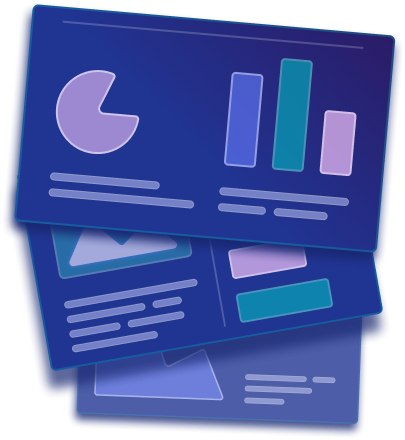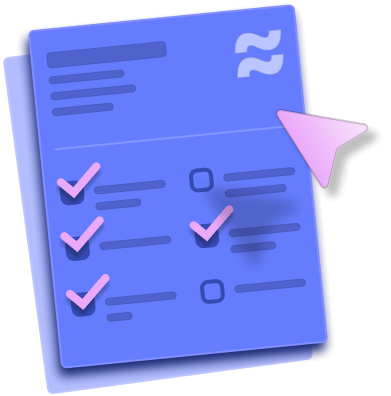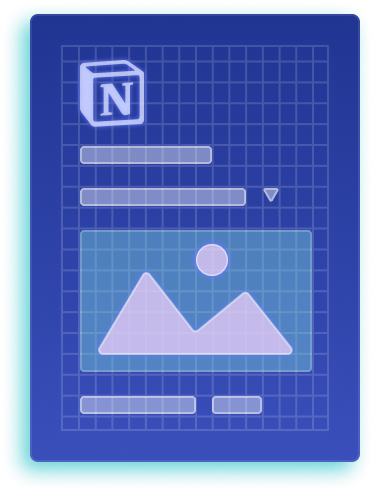
Webflow AB Testing: The Ultimate Guide & Best Tools
If you've been in the digital game for a while, you know that Webflow has come a long way from its origins. What started as a sleek tool for designers and developers has now evolved into the ultimate marketer's secret weapon.
Webflow isn't just about creating stunning websites (though it does that incredibly well). It's also about giving us marketers the power to execute and test various strategies without breaking a sweat.
And when it comes to optimizing our sites and boosting those all-important conversion rates, A/B testing is an absolute must.
{{cta}}
In this guide, I'll share some of the best tools for supercharging your A/B testing efforts so you can make data-driven decisions that lead to real, measurable success.
Plus, I'll walk you through the ins and outs of A/B testing with Webflow. I'll explain how to set up your tests, run them smoothly, and interpret the results like a pro.
Best Tools for A/B Testing on Webflow
Let's see how you can A/B test the best.
Optibase (Built for Webflow)
Optibase is the only native A/B testing tool specifically designed for Webflow. It integrates seamlessly within the Webflow Designer, allowing you to set up and manage tests directly. This simplifies the A/B testing process, making it easier to implement and analyze variations to optimize your website.
Due to it being part of the Webflow app ecosystem, Optibase is also easy to set up and use, letting you connect elements from the designer as conversions and variants for the test. Because of that, I used Optibase as a point of reference in this article when explaining how AB test works on Webflow (more details below).
.png)
- Price: Starts at $19/month (if billed annually, two months are free, so it comes down to $16 a month), largest package is $79 a month.
- Pros: Easy to use, lightweight, integrates seamlessly with Webflow, audience segmentation by geolocation and screen size.
- Cons: Feature set is still growing (detailed reporting coming soon).
Google Analytics 4 (GA4)
Before the shutdown in 2023, Google offered a tool called Optimize. However, it was shut down, and now we only have GA4. Google Analytics 4 is technically used a free A/B testing solution that is integrated within its powerful analytics platform. However, you will need other tools to make it all work and get detailed reporting. SEMrush created a great blog about this.
By leveraging GA4's robust data tracking and analysis capabilities, you can gain insights into user behavior and make data-driven decisions to optimize your site. However, making it work in unison with Webflow would require more effort and technical knowledge.
.png)
- Price: Free
- Pros: Free, integrates with other Google services (Ads, Merchant Center), user-friendly interface.
- Cons: Limited features compared to paid options, requires some learning for advanced users.
VWO
VWO (Visual Website Optimizer) is a comprehensive A/B testing platform that offers a range of advanced features designed to enhance website optimization. Alongside its robust A/B testing capabilities, VWO includes heatmaps and session recordings, which provide detailed insights into user interactions and behavior on your site.
These tools allow you to visualize where users click, how they navigate, and identify potential areas for improvement. VWO's platform also supports multivariate testing, split URL testing, and offers in-depth reporting and analytics to help you make data-driven decisions.
.png)
Image source: https://help.vwo.com/
- Price: Has a free plan, offers custom pricing (starts around $339/month)
- Pros: Feature-rich, powerful analytics, heatmaps and session recordings for deeper insights.
- Cons: Steeper learning curve, higher cost compared to some options.
AB Tasty
AB Tasty is an enterprise-grade A/B testing platform designed for personalization and user experience optimization. It offers advanced testing capabilities, including multivariate and funnel testing, allowing you to compare different versions of your web pages. AB Tasty also provides tools like heatmaps and session recordings to gain insights into user behavior.
Its robust personalization features enable tailored experiences based on user data, helping you optimize your site and improve conversions.

Image source: https://support.abtasty.com/
- Price: Custom pricing
- Pros: Powerful personalization features, advanced targeting options, excellent for large businesses.
- Cons: High cost, complex setup, may be overkill for smaller websites.
Crazy Egg
Crazy Egg is primarily known for its heatmapping capabilities, which allow you to visualize user interactions on your website. Additionally, it offers basic A/B testing functionalities that enable you to create and compare different versions of your web pages to determine which one performs better. This tool allows you to test variations in elements like headlines, images, and calls-to-action, helping you optimize your site's user experience and conversion rates.

Image source: https://support.crazyegg.com/
- Price: Starts at $249/month
- Pros: Affordable, good heatmapping features for visual insights, easy to use.
- Cons: Limited A/B testing capabilities, not ideal for complex tests.
Adobe Target
Adobe Target, part of the Adobe Marketing Cloud, is a powerful tool designed for advanced A/B testing, personalization, and audience segmentation. It allows marketers to experiment with different variations of their web pages and digital content to identify the most effective elements in driving user engagement and conversions.
Its capabilities include multivariate testing to test multiple combinations of elements simultaneously, automated personalization using machine learning to deliver personalized experiences based on user behavior, and audience segmentation to target specific user segments with tailored content.
Additionally, Adobe Target offers real-time reporting and analytics for quick data-driven decisions and integrates seamlessly with Adobe Analytics for comprehensive analysis and optimization strategies. These features make Adobe Target a robust solution for optimizing user experiences and driving business results.
.png)
Image source: https://news.adobe.com/
- Price: Custom pricing
- Pros: Integrates with other Adobe marketing tools, powerful features for large-scale testing and personalization.
- Cons: Very expensive, complex setup, best suited for enterprise use.
Understanding A/B Testing and How It Works on Webflow
Let’s now dive deeper into A/B testing.
Types of A/B Testing
- Classic A/B Testing: This is the most straightforward form of A/B testing, where two versions of a single element (Version A and Version B) are compared. For example, you might test two different headlines to see which one attracts more clicks. This type of testing is ideal for simple changes and is relatively easy to set up and analyze
- Multivariate Testing (MVT): Multivariate testing goes a step further by testing multiple variables simultaneously to determine the best combination of elements. Instead of just comparing two headlines, you might test different combinations of headlines, images, and buttons. This method is more complex but can provide deeper insights into how different elements interact with each other to influence user behavior.
- Split URL Testing: In split URL testing, entirely different versions of a webpage are hosted on separate URLs and compared to see which one performs better. This is useful for testing completely different designs or layouts. For example, you could compare a minimalistic design with a more content-rich layout to see which one resonates more with your audience.
- Multi-Page Testing: Multi-page testing involves making changes across multiple pages or steps in a funnel, such as a multi-step checkout process. This type of testing is beneficial for understanding how changes on one page affect the performance of subsequent pages and the overall user journey. For instance, you might test different checkout flows to find the most efficient path for users to complete a purchase.
Benefits of A/B Testing for Marketers
A/B testing is all about learning what works best and seeing it in numbers.
- Data-driven decisions: A/B testing provides concrete data to inform your marketing decisions, reducing guesswork and enhancing accuracy. By relying on actual user behavior and performance metrics, you can make more informed choices about what changes will be most effective.
- Improved user experience: By testing different elements of your site, you can identify changes that make the user experience more enjoyable and intuitive. This leads to higher engagement and satisfaction, as users are more likely to stay on your site and interact with your content.
- Higher conversion rates: Optimizing key elements that directly impact conversion rates, such as calls to action and landing page layouts, can lead to more sales, sign-ups, or other desired actions. A/B testing helps you pinpoint exactly what drives users to convert, allowing you to implement changes that boost your conversion rates.
- Reduced bounce rates: Identifying elements that keep users on your site longer can help reduce bounce rates. By testing different headlines, images, and content layouts, you can find the combinations that capture users' attention and encourage them to explore more of your site.
- Insight into user behavior: A/B testing offers valuable insights into how users interact with different elements of your site. Understanding these behaviors can help you tailor your content and design to better meet users' needs and preferences, ultimately leading to better performance.
Common Elements to A/B Test
- Headlines: Different headlines can significantly impact user interest and engagement. Testing variations can reveal which approach is more compelling to your audience.
- Images and Videos: Visual content influences user perception and actions. Experiment with different types to see what resonates best and drives engagement.
- Calls to Action (CTAs): Varying the text, color, and placement of CTAs can affect conversion rates. Testing different options helps determine what prompts more users to act.
- Button Designs: Button size, color, and text impact click-through rates. Testing different designs can reveal which is more effective at encouraging clicks.
- Form Fields: The number and order of fields can improve form completion rates. Testing different configurations can help maximize user submissions.
- Layout and Design: Page design, including navigation and layout, affects user flow and engagement. Testing different layouts helps determine which is more user-friendly.
- Product Descriptions: Different descriptions and formats impact purchase decisions. Testing variations can identify which style persuades more users to buy.
- Pricing: Testing different pricing models or discount offers can reveal what converts best, helping to find the optimal price point that drives sales.
Best Practices for A/B Testing
- Setting Clear Goals and Hypotheses: Before starting any A/B test, it's crucial to have a clear goal and hypothesis. Determine what you want to achieve, whether it's increasing conversion rates, reducing bounce rates, or improving user engagement. Formulate a hypothesis that predicts the outcome of the changes you plan to test, providing a clear direction for your experiment.
- Testing One Element at a Time: To accurately identify what impacts your results, focus on testing one element at a time. Whether it's a headline, image, or CTA button, isolating a single variable ensures that any changes in performance can be attributed directly to that specific element. This method simplifies analysis and helps you draw more precise conclusions.
- Running Tests for an Appropriate Duration: Ensure your tests run for an adequate period to gather sufficient data and reach statistically significant results. Avoid ending tests too early based on initial outcomes, as this can lead to inaccurate conclusions. Running tests for an appropriate duration helps account for variations in user behavior over time.
- Ensuring Sufficient Sample Size: A sufficient sample size is essential for reliable A/B test results. Ensure that enough users participate in your test to detect meaningful differences between variations. Small sample sizes can lead to inconclusive or misleading results, so aim for a statistically significant sample to validate your findings.
- Iterating Based on Results: A/B testing is an ongoing process. After analyzing your results, use the insights gained to iterate and refine your elements further. Implement the winning variation, but continue to test new ideas and improvements. This iterative approach helps you continuously optimize your site and enhance user experience.
How to Do A/B Testing in Webflow?
Thanks to the tools such as Optibase, it’s possible to A/B test sections of your page directly from your Webflow Designer. Therefore, to explain how A/B testing works, I will show Optibase’s options and how we do it internally at Flow Ninja.
First of all, here’s how to set up the tool.
- Open an account – First, it’s necessary to open an account at Optibase. The free plan allows you to have one active AB test on your website and you can test up to 10,000 monthly users.
- Install the app in Webflow Designer – Open Webflow Designer, and find the Apps button in the menu to the left. Type Optibase to find the app and install it.
- Connect your project with API – To connect your Webflow project, you’ll need to paste the API key, which is found in Optibase’s dashboard under User -> API Keys (lower right corner).

- Add script to custom code – The app will provide a script, which you need to copy and paste in the custom code section of your website. Don’t forget to publish the site after that.
- Click done – Return to Designer and click ‘Done’ in the Optibase app to finish setting up.

Now, Optibase offers several test types, including A/B, URL Split, and Multivariate tests, which I covered in this article. In this tutorial, I will focus on AB testing.
Once you open the app and log in, you’ll see two tabs – tests and conversions. Essentially, a conversion is a type of action the user needs to perform on your website, such as a click. Optibase also measures submit, page view, scroll depth, and time on the page. There’s also a programmatic option, which lets you use code to determine a conversion.

Let’s say you want to test two copy options in your CTA button. The conversion here would be to set the conversion to click on this button.

Connecting the desired conversion is as easy as selecting the element and clicking Connect in the Optibase window. For example, in the picture below, we connected our main CTA button as a conversion.

Next, you can create the AB test. First, select the type of test and name it.

Next, create the variants of the test. In our case, we decided to test two different CTA options, and that’s how we named them — based on the copy we wanted to be in the CTA button. However, you can name them anything you want.

Finally, it’s important to connect different variants. The first one is what we already had for the copy — Grow my project, and it’s our main variant. However, we wanted to test another version, which is more traditional — Let’s talk.
For this, it’s important to create a copy of the text as a separate element and connect that element to variant B. In other words, ‘Grow my project’ was variant A, and ‘Let’s talk’ was variant B.
We set the app to show variants 50/50, meaning 50% of visitors will see ‘Grow my project’ while others will see ‘Let’s talk’.
This is just a simple AB test, but for more information, I recommend visiting the official documentation site for Optibase.
For a step-by-step video guide, I recommend checking out the video below, created by the team behind Optibase.
Final Thoughts
Remember, the key to successful A/B testing lies in continuous experimentation and learning. Use the insights gained from your tests to make data-driven decisions and iteratively improve your site’s performance. Whether you’re just starting with A/B testing or looking to enhance your existing efforts, these tools can help you achieve your optimization goals and deliver a better experience for your visitors.
By leveraging the power of A/B testing, you can ensure that your Webflow site not only meets but exceeds your users’ expectations, leading to higher engagement, satisfaction, and ultimately, better business results.





The 2025 Playbook for Website Customer Acquisition
After helping 200+ clients skyrocket their conversions, we’ve created an in-depth marketing guide for turning websites into sales drivers.
.png)

.png)

in mind?
Talk with our team and learn how your ideas can become digital experiences.

.svg)










.png)
.png)



-min.png)

-min.png)









.svg)

.png)
.png)
.webp)
.svg)


